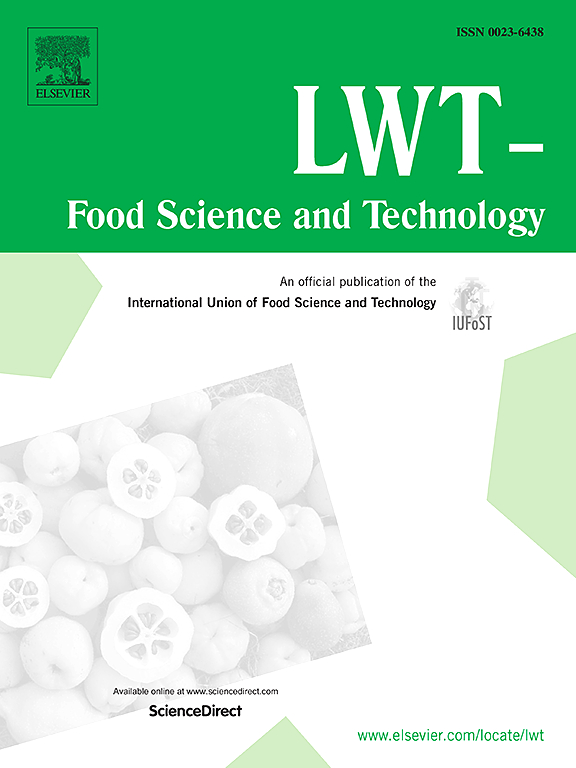提高齐墩果酸在自构建油包水乳状液中生物可及性的有效策略:以八烷醇为基础的油相凝胶化
IF 6
1区 农林科学
Q1 FOOD SCIENCE & TECHNOLOGY
引用次数: 0
摘要
自制的W/O乳剂作为三萜的有效口服给药系统。油相胶凝稳定是否能改善乳状液的输送还需要进一步的研究。本研究以生物活性物质八烷醇(Octacosanol, Octa)为油凝胶剂,以典型的三萜(齐墩果酸,OA)为稳定剂,制备了油凝胶包水乳液传递体系。结果表明,增加Octa浓度可诱导油凝胶内部形成致密的针状晶体网络,同时提高乳液的热稳定性和优异的储存稳定性。此外,凝胶浓度可以调节凝胶性质。经过octa诱导的油相凝胶化,油凝胶水乳状液体系中的液滴在进入模拟肠液相时粒径减小,脂质消化程度提高,消化速度加快,OA生物可及性增加。这项研究不仅为口服给药提供了食品级解决方案,而且为构建利用内在生物活性特性来减少外源添加剂的简化给药系统提供了一个范例。本文章由计算机程序翻译,如有差异,请以英文原文为准。

An effective strategy to improve the bioaccessibility of oleanolic acid in self-constructed water-in-oil emulsions: oil phase gelation based on octacosanol
Self-constructed W/O emulsions were used as effective oral delivery systems for triterpenoids. Whether stabilization by gelation of the oil phase can improve the delivery of emulsions needs further investigation. In this work, we used the bioactive substance (Octacosanol, Octa) as the oil gelator and the typical triterpenoid (Oleanolic acid, OA) as the stabilizer to prepare the water-in-oleogel emulsion delivery system. Results demonstrated that increasing Octa concentration induced the formation of a denser needle-like crystal network within the oleogel, accompanied by enhancing thermal stability and excellent storage stability of the emulsion. Furthermore, the gelator concentration can be modulated to gel properties. Following Octa-induced oil phase gelation, droplets in the water-in-oleogel emulsion system exhibited reduced particle sizes upon entering the simulated intestinal fluid phase, accompanied by a higher lipid digestion degree, accelerated digestion rate, and increased OA bioaccessibility. This study not only advances food-grade solutions for OA oral delivery but also offers a paradigm for constructing simplified delivery systems that leverage intrinsic bioactive properties to minimize exogenous additives.
求助全文
通过发布文献求助,成功后即可免费获取论文全文。
去求助
来源期刊

LWT - Food Science and Technology
工程技术-食品科技
CiteScore
11.80
自引率
6.70%
发文量
1724
审稿时长
65 days
期刊介绍:
LWT - Food Science and Technology is an international journal that publishes innovative papers in the fields of food chemistry, biochemistry, microbiology, technology and nutrition. The work described should be innovative either in the approach or in the methods used. The significance of the results either for the science community or for the food industry must also be specified. Contributions written in English are welcomed in the form of review articles, short reviews, research papers, and research notes. Papers featuring animal trials and cell cultures are outside the scope of the journal and will not be considered for publication.
 求助内容:
求助内容: 应助结果提醒方式:
应助结果提醒方式:


